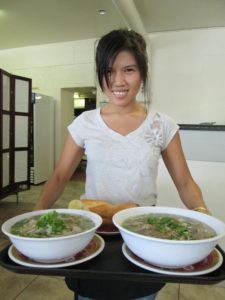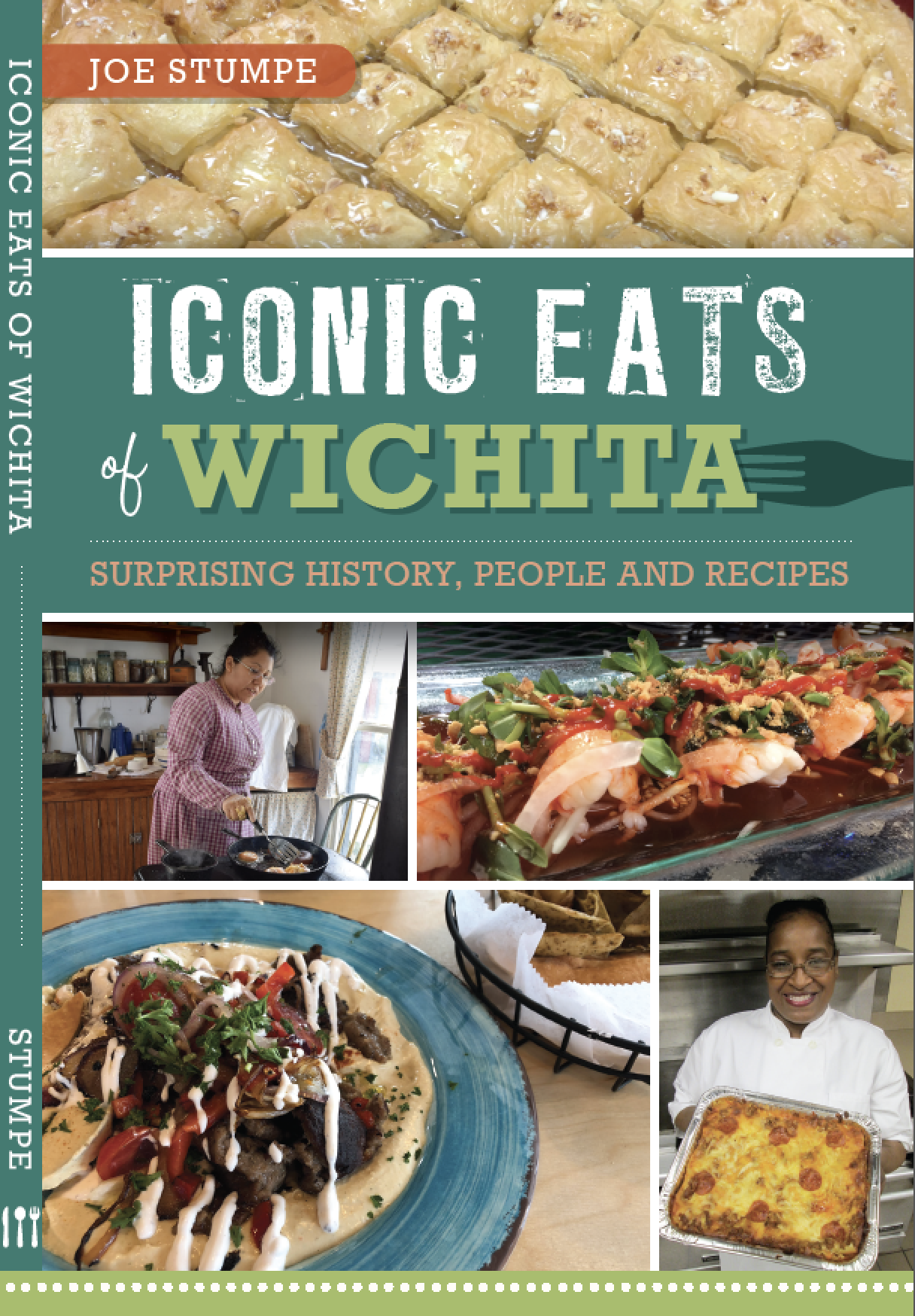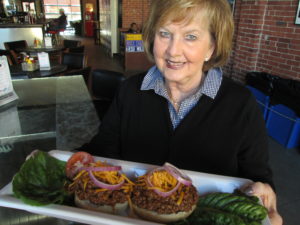If we are what we eat, I’m hoping my new book presents a self-portrait that Wichitans find deliciously recognizable.
Iconic Eats of Wichita: Surprising History, People and Recipes features nearly 200 recipes that I’ve collected while writing for the Wichita Eagle, Splurge magazine and The Active Age over the last two decades.

Wichita’s bounty of great ethnic restaurants is explored in Iconic Eats of Wichita. Here, a waitress serves up pho, the national soup of Vietnam.
Of course, you can’t write about food without writing about the people who make it. One chapter profiles women who shaped the city’s domestic cooking during its frontier days and beyond. Another reveals the colorful inventor of what many consider Wichita’s signature dish — Garlic Salad. Scores of recipes and the stories behind them are shared by professional chefs, church dinner chiefs, recipe contest winners, home cooks and more.
The food and histories of three immigrant groups — Lebanese, Mexican and Vietnamese — that have given Wichita’s dining scene its unique complexion are explored in detail. There’s a chapter looking at the city’s current food scene, too, featuring never-before-published recipes.
On this page you’ll find excerpts, photographs and a recipe from the book, which Arcadia Publishing is publishing this month. The 240-page book costs $21.99. It will be available in retail stores on or about Jan. 17. Or you can order directly from me by calling 316-942-5385 or emailing jstumpe@cox.net.
From Chapter 1: Pioneer Women
Cooking in early Wichita wasn’t a job for wussies. In addition to the necessity of raising or killing much of what went onto their plates, the frontier settlement’s cooks had to deal with kitchen equipment that would send many cooks today straight to Uber Eats.
I got a tiny taste of what cooking was like back then one day at Old Cowtown Museum, the living history museum on the banks of the Arkansas River. Then employed as the Wichita Eagle’s food editor, I came up with the brilliant idea of tagging along as Cowtown’s director of historical interpretation prepared a meal in the museum’s circa 1884 farmhouse.
It turned out to be one of the coldest days of the year — fifteen degrees with a blustery wind blowing through the old farmhouse’s walls. The stove was heavy black iron. It took a box of wood and much of the morning to get the thing hot enough to cook anything. I suppose it could have been worse: In frontier days, when the Kansas prairie was nearly treeless, the fuel used for cooking probably would have been cow chips, adding a distinctive aroma to the occasion.
Most cooking back then was done by women, who also tended home garden plots, collected eggs daily and butchered chickens for Sunday dinner. As the city grew, homemakers added refined touches to their dinner tables. In 1891, a group of women started the Thursday Afternoon Cooking Club, sharing recipes and cooking techniques with the goal of making sure that younger members knew how to entertain properly. The iconic Riverside Castle became a favorite meeting place for the group since one of the group’s founders, Mrs. B.H. Campbell, lived there.
Fast-forward a century after the Thursday Afternoon Cooking Club’s start, and women were still pushing the city’s culinary habits forward. None was more recognizable than Kathleen Kelly, who served as the Eagle’s food editor from 1955 through 1994. Known for her fancy hats and down-to-earth approach, Kelly was in most respects lucky to work during the heyday of the newspaper business. The Eagle sent her around the world to learn about food and bring that knowledge home to readers. Only those readers with long memories would remember that Kelly’s first husband died in a 1960 plane crash while working as a photographer for the Eagle.
From Chapter 9: RIP
For almost two decades, Tanya Tandoc was Wichita’s best-known restaurant owner. That’s true even when she wasn’t in the restaurant business. During the eight-year period between the first and second incarnations of Tanya’s Soup Kitchen, it seemed that all anyone wanted to know was: When will she open another restaurant?
When I met Tanya, her restaurant was located just out the back door from the Wichita Eagle, in the former Union Station baggage building. Two things impressed me: the volume of tattoos she sported (not quite as common then as now) and the amount of heavy cream she put in many of her soups.
“Cream is love,” she purred, punctuating the remark with a giggle. She was always very quotable.
Tanya’s Tomato Bisque
Source: Tanya Tandoc
1 can (28 ounces) crushed tomatoes
1 small can (6 ounces) tomato paste
1 cup water
2 cups heavy cream
2 teaspoons dried dill
1 teaspoon garlic powder
Salt and pepper, to taste
2 tablespoons sugar, or to taste
Put all ingredients in a pot and whisk together. Bring to a boil, reduce heat and simmer 10 minutes.











